Dengue, políticas públicas y realidad sociocultural: una aproximación al caso colombiano
DOI:
https://doi.org/10.22380/2539472X.1219Palabras clave:
dengue, narrativas de la enfermedad, políticas públicas en salud, promoción de la salud y prevención de la enfermedad, enfermedades tropicales.Resumen
Este artículo reflexiona sobre las políticas públicas del control del dengue a partir del mundo de la vida cotidiana, desde una perspectiva crítica que busca debatir el desarrollo de las mismas frente a las percepciones que tiene la población sobre la enfermedad. El texto debate, a partir de un estudio de caso en Colombia, el encuentro de dos realidades sociales: el sector oficial en cabeza de las campañas de salud pública, y la población, que desde sus representaciones sociales sobre la enfermedad construye itinerarios terapéuticos para enfrentar la misma.
Descargas
Referencias bibliográficas
Abel, C. 1995. “External philanthropy and domestic change in Colombian health care: The role of the Rockefeller Foundation, 1920-1950”. The Hispanic Historical Review. 75 (3). DOI: https://doi.org/10.2307/2517226
Ackerknecht, E. 1955. A short history of medicine. Ronald Press. Nueva York.
Alison, A. C. 1954. “Protection afforded by sickle-cell trait against subtertial Malaria infection”. British Medical Journal. 1. DOI: https://doi.org/10.1136/bmj.1.4857.290
Armelagos, G. J. y Dewey, J. R. 1970. “Evolutionary response to human infectious diseases”. Bioscience. 157. DOI: https://doi.org/10.2307/1295204
Ashford, D. A., Savage, H. M., Hajjeh, R. A., Mcready, J., Bartholomew, D. M., Spiegel, R. A., Vorndam, V., Clark, G. y Gubler, D. G. 2003. “Outbreak of Dengue fever in Palau, Western Pacific. Risk factors for infections”. American Journal of Tropical Medicine and Hygiene. 69 (2).
Audy, J. R. 1971. “Measurement and diagnosis of health”. En P. Shepard y D. Mckinley (eds). Environmental. Essays on the planet as a home. Houghton-Mifflin. Boston.
–. 1974. “Measurement and diagnosis of health”. En P. Shepard y D. Mckinley (eds). Environmental. Essays on the planet as a home. North Holland. Nueva York.
Barbosa, C. 1998. “Epidemiology and anthropology: An integrated approach dealing with bio-socio-cultural aspects as strategy for the control of endemic diseases”. Memórias do Instituto Oswaldo Cruz. 93 (Suppl.1). DOI: https://doi.org/10.1590/S0074-02761998000700008
Benavides, M., Realpe, L. y Fajardo, P. 1997. “Evaluación del tiempo en que Aedes eegypti coloniza y desarrolla su fase acuática en los lavaderos de ropa de los barrios surorientales de Neiva”. Biomédica. 17 (4). DOI: https://doi.org/10.7705/biomedica.v17i4.958
Briceño-León, R. 1999. Ciencias sociales y salud en América Latina: un balance. Fundación Polar. Caracas. BROWN, P. J. 1981. “Working group on infectious diseases”. Medical Anthropology Quarterly. 12.
Center For Disease Control (CDC). 1979a. “Control of dengue”. Vector Topics. 2. Noviembre. –
–. 1979b. “Biology and control of Aedes eegypti”. Vector Topics. 4. Septiembre.
Cochran, G. M., Ewald, P. W. y Cochran, K. D. 2000. “Infectious causation of disease: An evolutionary perspective (statistical data included)”. Perspectives in Biology and Medicine. 43. DOI: https://doi.org/10.1353/pbm.2000.0016
Coleman, W. 1982. Death is a social disease. University of Winsconsin Press. Madison.
Cueto, M. 1992 “Sanitation from above: Yellow fever and foreign intervention in Peru, 1919-1922”. The Hispanic American Historical Review. 72 (1). DOI: https://doi.org/10.2307/2515945
Desowitz, R. S. 1998. Who gave Pinta to the Santa Maria? Torrid diseases in a temperate world. Harvest Books.
Dubos, R. 1965. Man adapting. Yale University Press. New Haven.
–. 1968. Man, medicine and environment. Praeger. Nueva York.
DUNN, F. L. 1979. “Behavioral aspects of the control of parasitic diseases”. Bulletin WHO. 57. ––––
–. 1983. “Human behavioral factors in mosquito vector control”. Asian Journal of Tropical Medicine and Public Health. 14.
Ehrenkranz, N. J., Ventura, A. K., Cuadrado, R. R., Pond, W. L. Y Porter, J. E. 1971. “Pandemic Dengue in the Caribbean countries and the southern U.S. -Past, present and potential problems”. New England Journal of Medicine. 285.
Estrada-Franco, J. Y Craig, G. 1995. Biología, relaciones con enfermedades y control de Aedes albopictus. Cuaderno técnico 42. OPS-OMS. Washigton.
Flórez, A. 2001. “Juegos de lenguaje y significado”. En Juan José Botero (ed.). El pensamiento de L. Wittgenstein. Universidad Nacional de Colombia. Bogotá.
Foster, G. M. Y Anderson, B. G. 1978. Medical Anthropology. Wiley. Nueva York.
Gibbons, R. V. Y Vaughn, D. W. 2002. “Dengue: An escalating problem”. British Medical Journal. 324. DOI: https://doi.org/10.1136/bmj.324.7353.1563
Gorgas, W. C. 1915. Sanitation in Panama. Appleton. Nueva York.
Gubler, D. J. 2002. “The global emergente/resurgence of arboviral diseases as public health problems. Review article”. Archives of Medical Research. 33. DOI: https://doi.org/10.1016/S0188-4409(02)00378-8
Gubler, D. J. Y Clark, G. G. 1994. “Community-based integrated control of Aedes aegypti: A brief overview of current programs”. American Journal of Tropical Medicine and Hygiene. 50. (Suppl. 6). DOI: https://doi.org/10.4269/ajtmh.1994.50.50
Gubler, D. J. y Meltzer, M. 1999. “Impact of Dengue/Dengue hemorrhagic. Advances in virus research fever on the developing world”. Advances in Virus Research. 53.
Haldane, J. B. S. 1949. “Disease and evolution”. La Ric. SCI. 19.
Halstead, S. 1988 “Aedes aegypti: why can't we control it?“ Bull. Soc. Vector. Ecol. 13 (2).
Informe Epidemiológico Nacional (IEN). 1998a. Informe sobre la evaluación de la situación epidemiológica del dengue en Villavicencio, Acacías y Armenia. INS. Bogotá.
–. 1998b. Vigilancia epidemiológica para Aedes albopictus. INS. Bogotá.
–. 1998c. Distribución de Aedes aegypti en Colombia. INS. Bogotá.
–. 1998d. Sistema alerta acción. INS. Bogotá.
Inhorn, M. C. y Brown, P. J. 1990. “The anthropology of infectious diseases”. The Annual Review of Anthropology 19. DOI: https://doi.org/10.1146/annurev.an.19.100190.000513
Ionescu, G. 1976. Saint Simon, Claude-Henri de Rouvroy. The political thought of Saint-Simon. Oxford University Press. Oxford.
Kendall, C., Hudelson, P., Leontsini, E., Winch, P., Lloyd, L. y Cruz, F. 1991. “Urbanization, Dengue, and the health transition: Anthropological contributions to international health”. Medical Anthropology Quarterly. New Series. 5 (3). DOI: https://doi.org/10.1525/maq.1991.5.3.02a00050
Lafaille, R. 1993. “Towards the foundation of a new science of health: Possibilities, challenges and pitfalls”. En R. Lafaille y S. Fulder (eds.). Towards a new science of health. Routledge. Londres.
Leppo, K. 1997. “Introduction”. En M. Koivusalo y E. Ollila (eds.). Making a healthy world: Agencies, actors and policies in international health. St. Martin's Press. Londres.
Maccormack, C. 1985. “Anthropology and the control of tropical disease”. Anthropology Today. 1 3. DOI: https://doi.org/10.2307/3033124
Mcconell, K. J. Y Gubler, D. J. 2003. “Guidelines on the cost-effectiveness of larval control programs to reduce Dengue transmission in Puerto Rico”. Revista Panamericana de Salud Pública. 14 (1). DOI: https://doi.org/10.1590/S1020-49892003000600003
María Luisa de Parma, Reina de España. 1801. Cartas a Manuel de Godoy. Archivo del palacio real, Madrid, España. Sección histórica, papeles reservados de Fernando VII.
Martínez, E. 1990. Dengue hemorrágico en niños. INS. Bogotá.
May, J. M. 1989. The ecology of human disease. MD Publications. Nueva York.
Mcsherry, J. 1993. “Dengue”. En K. F. Kiple (ed.). The Cambridge world history of human disease. Cambridge University Press. Cambridge. DOI: https://doi.org/10.1017/CHOL9780521332866.095
Messer, W. B., Vitarana, U. T., Sivananthan, K., Elvtigala, J., Preethimala, L. D., Ramesh, R., Whitana, N., Gubler, D. J. Y De Silva, A. M. 2002. “Epidemiology of Dengue in Sri Lanka before and after the emergence of epidemic Dengue Hemorrhagic fever”. American Journal of Tropical Medicine and Hygiene. 66 (6). DOI: https://doi.org/10.4269/ajtmh.2002.66.765
Morales, A., Olano, V. A. Y Ferro, C. 1998. “Laboratorio de entomología 1934-1997”. En G. Toro, C. A. Hernández y J. Raad (eds.). Instituto Nacional de Salud 1917-1997. Una historia un compromiso. INS. Bogotá.
Niehoff, J. Y Schneider, F. 1993. “Epidemiology and the criticism of the risk-factor approach”. En R. Lafaille y S. Fulder (eds.). Towards a new science of health. Routledge. Londres.
Ospina, M. B. Y Gómez, C. 2001. “¿La investigación cuantitativa frente a la investigación cualitativa?”. En A. Morales, C. Gómez y D. Londoño (eds.). Investigación clínica: epidemiología clínica aplicada. Ceja. Bogotá.
Panamerican Health Organization. 2004a. Number of reported cases of Dengue & Dengue Hemorrhagic Fever (DHF), region of the Americas (by country and subregion 2003). Panamerican Health Organization. Washington.
–. 2004b. Estrategia de gestión integrada de prevención y control del dengue en Centroamérica y República Dominicana. Ministerio de Salud de República Dominicana, BID, OPS/OMS. Santo Domingo.
–. 2003. Resolución CD44.R9. LV reunión del comité regional. Panamerican Health Organization. Washington.
–. 2001a. Resolución CD43.R4. XL reunión del comité regional. Panamerican Health Organization. Washington.
–. 2001b. Marco de referencia para la nueva generación de programas de prevención y control del dengue en las Américas. Documento CD 43/12. Programa de enfermedades transmisibles. Panamerican Health Organization. Washington.
–. 1997. Plan continental de ampliación e intensificación del combate al Aedes aegypti. Informe de un grupo de trabajo. Panamerican Health Organization. Caracas.
Pandit, C. G. 1970. “Communicable diseases in twientieth-century India”. The American Journal of Tropical Medicine and Hygiene. 19 (3). DOI: https://doi.org/10.4269/ajtmh.1970.19.375
Parks, W. y Lloyd, L. 2003. Planificación de la movilización y comunicación social para la prevención y el control del dengue. World Health Organization. Ginebra.
Peard, J. 1997. “Tropical disorders and the forging of a Brazilian medical identity, 1860-1890”. The Hispanic American Historical Review. 1.
Porter, D. 1999. Health, civilization and the state. Routledge. Londres.
Reiter, P., Lathrop, S., Bunning, M., Biggerstaff, B., Singer, D., Tiwari, T., Baber, L., Amador, M., Thirion, J., Hayes, J., Seca, C., Mendez, J., Ramirez, B., Jerome, R., Rawlings, J., Vorndam, V., Waterman, S., Gubler, D., Clark, G. Y Hayes, E. 2003. “Texas lifestyle limits transmission of Dengue virus”. Emerging Infectious Diseases. 9 (1). DOI: https://doi.org/10.3201/eid0901.020220
Rigau-Pérez, J. (1998). “The early use of break bone fever (quebranta huesos, 1771) and dengue in Spanish”. American Journal of Tropical Hygiene. 59 (2). DOI: https://doi.org/10.4269/ajtmh.1998.59.272
Rodríguez, R. 2002. “Estrategias para el control del dengue y del Aedes aegypti en las Américas”. Revista Cubana de Medicina Tropical. 54 (3).
Roundy, R. W. 1978. “A model for combining human behavior and disease ecology to assess disease hazard in a community: Rural Ethiopia as a model”. Social Science and Medicine. 12. DOI: https://doi.org/10.1016/0160-8002(78)90016-3
Schneider, J. Y Droll, D. 2001. A timeline for Dengue in the Americas to December 31, 2000 and noted first occurrences. Panamerican Health Organization. Ginebra
Service, M. 1993. “Community participation in vector-borne disease control”. Annals of Tropical Medicine and Parasitology. 87 (3). DOI: https://doi.org/10.1080/00034983.1993.11812760
Shepard, D. S., Suaya, J. A., Halstead, S. B., Nathan, M. B., Gubler, D. J., Mahoney, R. T., Wang, D. N. C. Y Meltzer, M. 2004. “Cost-effectiveness of a pediatric Dengue vaccine”. Vaccine. 22. DOI: https://doi.org/10.1016/j.vaccine.2003.09.019
Simpson, J. A. Y Weiner, E. S. C. 1989. The Oxford English Dictionary (segunda edición). Clarendon Press. Oxford.
Sivigila. 2002. Boletín Epidemiológico Semanal (enero 13 a 19 de 2002). INS. Bogotá.
Slosek, J. 1986. “Aedes aegyti mossquitoes in the Americas: A review of their interaction with human population”. Social Science and Medicine. 23 (3). DOI: https://doi.org/10.1016/0277-9536(86)90345-X
Suárez, R. 2000. “Aspectos culturales en la subsistencia y reproducción del dengue y del Aedes aegipty: una discusión sobre la importancia de la investigación en la antropología médica”. Boletín de Antropología Universidad Javeriana. 6 (6).
–. 1999. A cross cultural study on physicians' and healers' education in Colombia. Université de Genève. Ginebra.
Suárez, R. y Forero, A. M. 2002. Itinerarios terapéuticos de los devotos al Divino Niño del 20 de Julio: entre las fisuras de las narrativas expertas en salud. Ediciones Uniandes. Bogotá.
Suárez, R., Forero, A. M. y Olarte, M. F. 2003. El dengue en Villavicencio: entre la realidad biológica y la realidad social. Documento Ceso 38. Ediciones Uniandes. Bogotá.
Turshen, M. 1984. The political ecology of disease in Tanzania. Rutgers University Press. New Brunswick.
Vlassof, C. 1993. “El estado actual de la investigación social y económica sobre las enfermedades tropicales”. En R. Briceño-León y J. Pinto (comp.). Las enfermedades tropicales en la sociedad contemporánea. Fondo Editorial Acta Científica de Venezuela y Consorcio de Ediciones Carriles. Caracas.
Whiteford, L. M. 1997. “The ethnoecology of Dengue fever”. Medical Anthropology Quaterly. New Series. 11 (2). DOI: https://doi.org/10.1525/maq.1997.11.2.202
Winch, P. J., Leontsini, E., Rigau-Pérez, J., Ruiz-Pérez, M., Clark, G. Y Gubler, D. J. 2002. “Community-based dengue prevention programs in Puerto Rico: Impact on knowledge, behavior, and residential mosquito infestation”. American Journal of Tropical Medicine and Hygiene. 67 (4). DOI: https://doi.org/10.4269/ajtmh.2002.67.363
Wisseman, C. L. Y Sweet, B. H. 1961. “The ecology of Dengue“. En J. J. May (ed.). Studies in disease ecology. Hafner. Nueva York.
Wittgenstein, L. 1965. Philosophical investigations. Blackwell. Oxford.
World Health Organization. 2002. Strategic direction for research. Dengue. Disease burden and epidemiological trends. WHO. Ginebra.
–. 2001. Tropical disease research. WHO. Ginebra.
–. 2000. Strengthening implementation of the global strategy for dengue fever/ Dengue haemorrhagic fever prevention and control. Report of the Informal Consultation 18-20 October 1999. WHO. Ginebra.




















